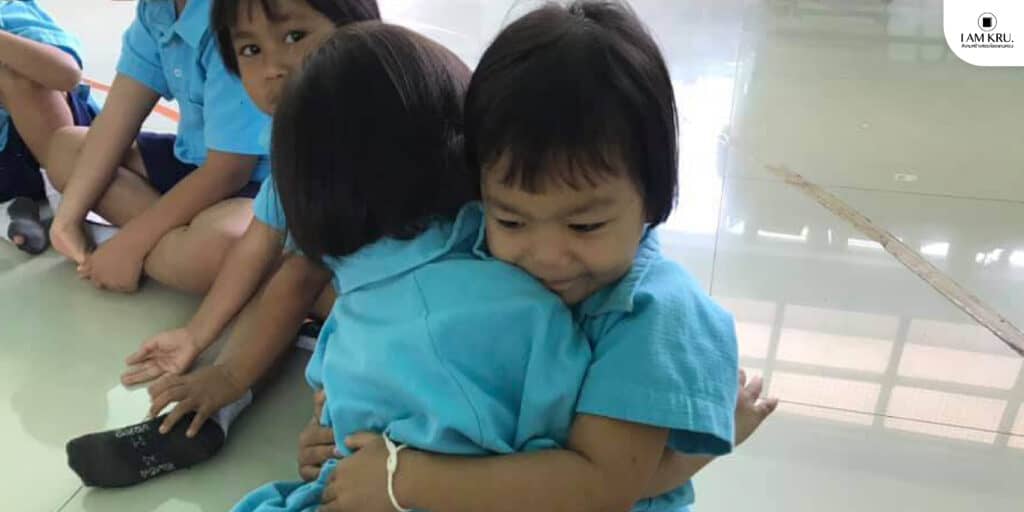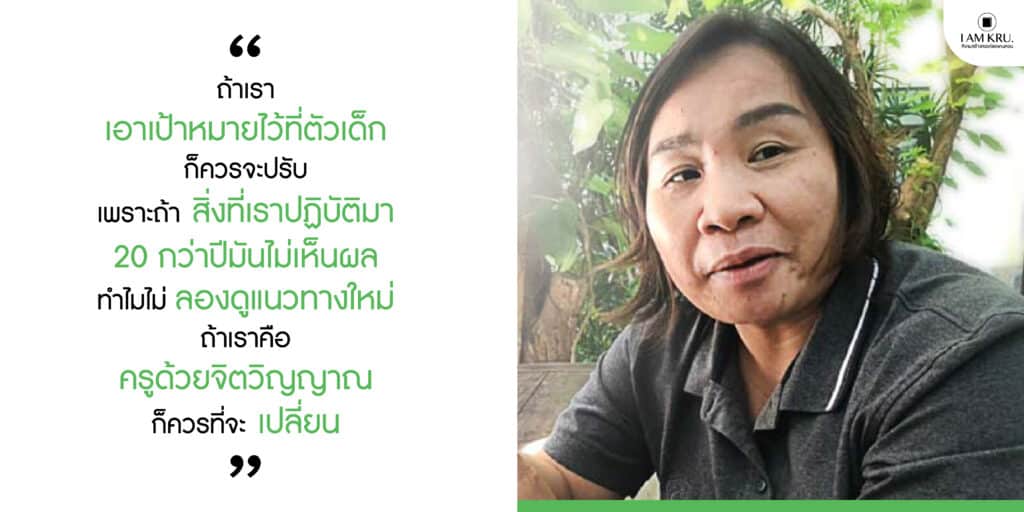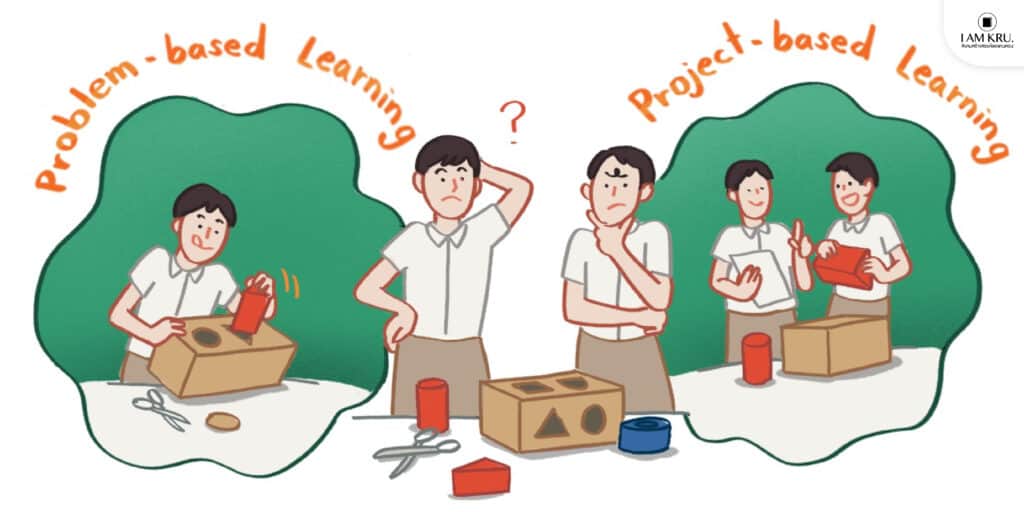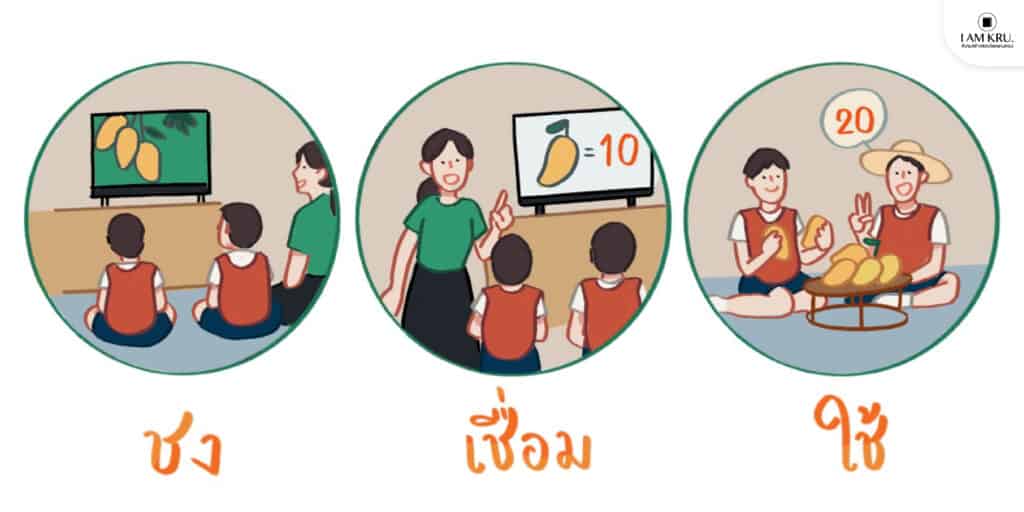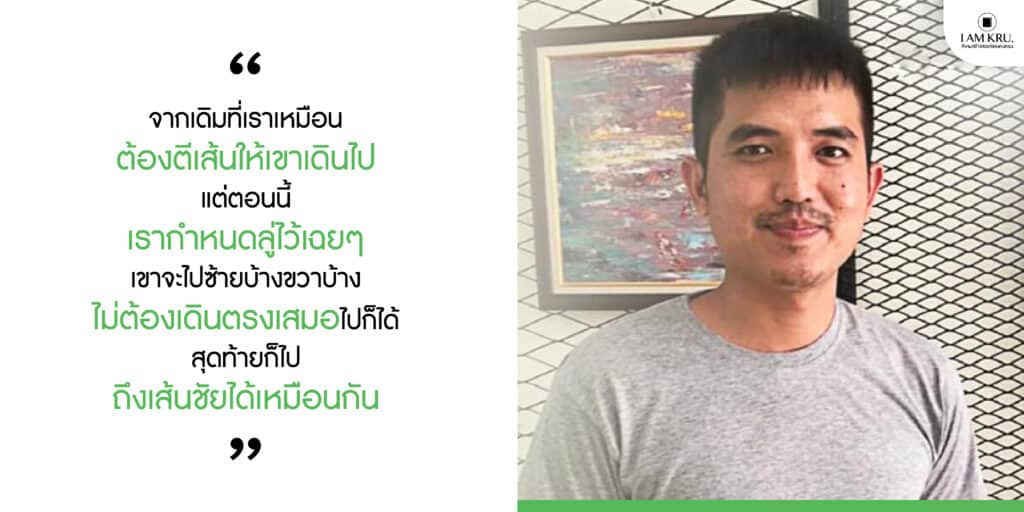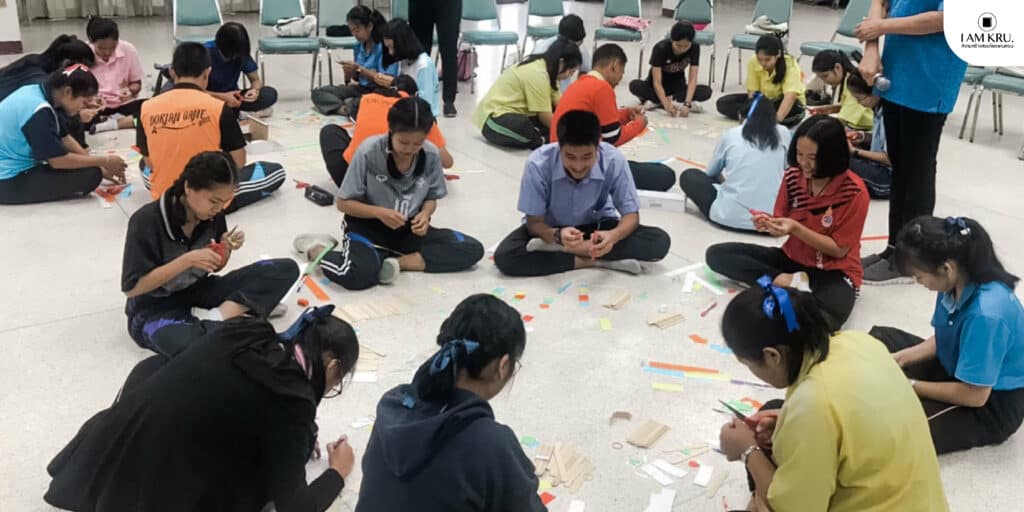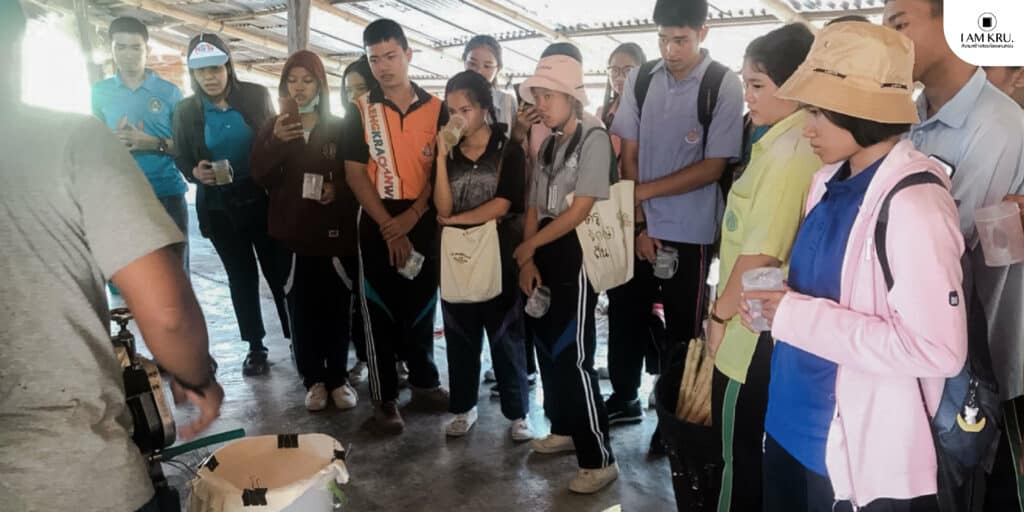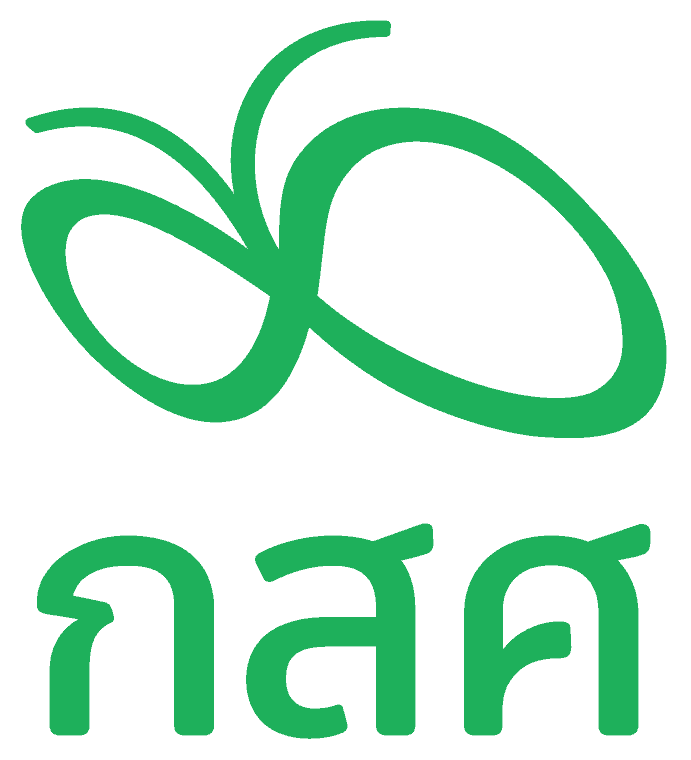“A good learning approach is having a good social environment for working with others. It’s based on facts, not on emotions. This kind of environment will be created through questioning and accumulating life experiences,” said Paul.
Paul Collard : Creativity,
Culture and Education (CCE)
Good development of learning approaches should start from children’s ‘creativity’, but the education system in Thailand still lacks encouragement of creativity at every level of classes. Although, administration and education system are improved, classrooms still lack creativity if students have no fun in learning and don’t have a wider space for their expressions. As a result, students with their unrevealed talents would shine less and less bright.
Equity Education Fund (EEF) worked in collaboration with Paul Collard, the founder of Creativity, Culture and Education (CCE), who aims to encourage creativity of children in England and countries around the world. CCE helps teachers design creative practices in classrooms. The key questions of this interview will dig deep into what ways CCE applies creativity in solving learning approach issues among children. The questions are why Paul sees ‘opportunities’ in Thailand and how he has turned COVID-19 crisis into educational opportunities.
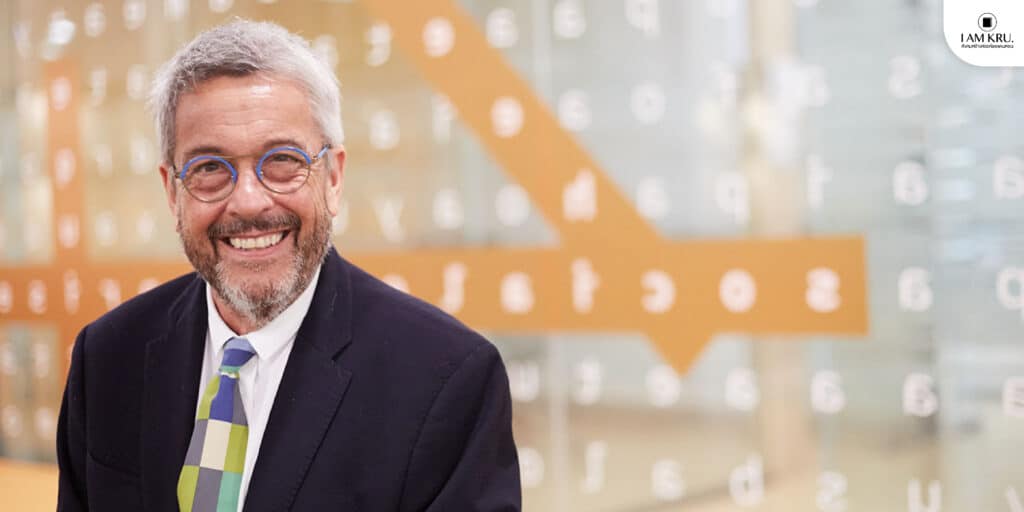
The starting point of working in Thailand
Paul collaborated with England government in the project of Creative Partnerships which belongs to the ‘creative industry’ for promoting child learning development not only in England but also in other countries across the world. Thailand is among other target countries that Paul is interested in collaborating with because EEF shares the same goal as CCE which is solving educational inequality and improving poor students’ learning development.
Statistically, it’s revealed that poor students tend to have lower academic performance. The study conducted by CCE revealed that poor students tend to have low-level learning development as well. Therefore, CCE works toward improvement of child learning development to increase students’ learning performance regardless of their economic background.
Besides poverty, another important factor affecting students’ learning performance is the ‘educational system’ which needs to be suitable for the students’ lives and environment. The curriculum should focus on the study subjects that are practical in daily life. It shouldn’t just follow the curriculums from other countries just because they are the most successful ones since the curriculums’ positive outcomes depend on context in each country. It doesn’t mean that the effective curriculum in one country will yield the same success in other countries.
The main focus of CCE’s mission
How can a suitable ‘educational system’ for children be created?
CCE focuses on a great learning experience which is the learning approach that is suitable for collaborating with other people based on facts, not on abstract concepts. Students have to have empathy in learning. To create empathic learning, teachers have to adopt the approach of creating a great learning experience instead of a lecture method. With this method, students tend to increase their involvement in classes, attend classes more, and improve various skills better. That’s because they have fun learning. The relationship between teachers and students also improves.
With his experience in observing classrooms along with his long-term experience in working in the education sector, Paul learned that children will develop their creativity through five basic characteristics which are inquisitive, persistent, imaginative, disciplined and collaborative. These characteristics will develop through students’ great learning experiences.
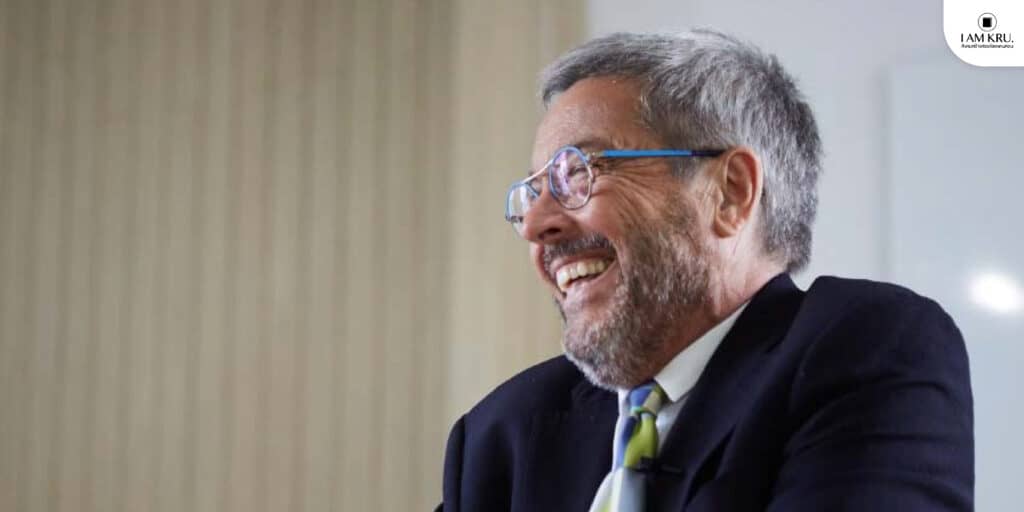
Quality conversation
One thing that can foster the development of basic five characteristics is a quality conversation with discursive language. According to a study, it’s revealed that the type of language that adults use to communicate with children can be categorized as administrative language and discursive language. The discursive language is more complex and ambiguous which arouses children’s curiosity. For example, many parents ask how their children feel or what colors they see when they experience the sunlight shining through leaves and reflecting on the ground. But the problem is that 50% of parents live in poverty and generally don’t have time to communicate with their kids to nurture the minds of children. That’s how the quality of a conversation through a language is reduced. The effort of creating a quality conversation with the use of discursive language then becomes a responsibility of teachers. It won’t help the students to develop their thinking skills if the teachers deliver information to students and expect them to learn from memorizing the knowledge. So, the teachers have to create the experience of thinking and finding by means of a complex language so that the children can find answers on their own.
Diversity of learning approaches and disciplines in classrooms
Paul’s CCE questions the mainstream education system that holds onto narrow concepts. The widely adopted concept is how teachers give students a lot of knowledge content and test if they can remember what the teachers taught. But what’s actually more important is that the students should get to learn in various ways and need more challenges over the course of classes.
Dr. Kraiyos Pattarawat, deputy manager of EEF, described that Thailand also struggles with the narrow concepts. We have to be aware that there are over hundreds of educational systems. The more the teachers adopt various kinds of learning approaches, the better the teaching becomes. Therefore, good learning approaches can come in diverse forms. But most teachers don’t use enough various teaching methods. Our mission is thus to try to promote the opportunities for the teachers to adopt differentiated learning approaches.
The common principle of diversity of classrooms is ‘self-discipline.’ What teachers have to do is to encourage students’ self-discipline development. Each student wants to learn different things. Some students are fast learners, while some students learn at a slower pace. As a result, students gain a different level of knowledge. So, they have to keep self-discipline to learn and understand the lessons in classrooms that they want. Self-discipline is the skill that children have to develop. To be self-disciplined will allow children to learn different things happily. And ‘happiness’ has been the strength of education in Thailand for a long time.
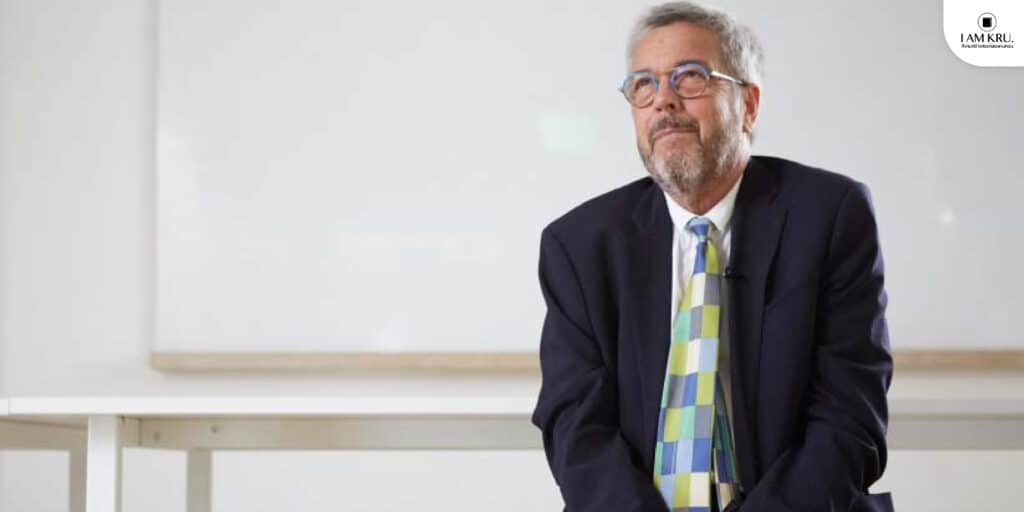
Adopting CCE to cope with COVID-19 education crisis
The outbreak of COVID-19 forced many school closures for a long time. Most teachers have to provide online classes which are terrible since the teachers only provide the files of lesson sheets for students to read and do some lesson exercises.
Another part of CCE tasks is to ‘collaborate with teachers’ and guide them about facilitating online classes which focuses on the relationship between students and teachers because this is the key to success in learning. The question is how teachers maintain their relationships with students.
CCE gave an example of ‘Norway’. Online classes provided by Norwegian schools are highly effective. A school director explained that all teachers have to have a telephone for a 10-minute one-on-one online class twice a week. In each class, teachers should ask students what they are doing and how they are.
This kind of learning approach will let students know that their relationships with the teachers at school are still the same and they can still feel the connection with their school. All students feel encouraged to do the assignments because they still have close bonds with their teachers. The online learning platform is therefore needed to be designed thoroughly to combine all the elements that will make teaching successful.
The COVID-19 pandemic has severely affected the lives of students. Once schools reopen, some students might not be mentally ready to go back to school. Having to go through a lockdown, their mental health is affected. They are less cheerful and less energetic to thrive. Therefore, the teachers have to create space for children to increase their energy of learning by allowing them to design their own learning approach. This process serves the function of allowing the students to feel that they can take control of their life and can self-manage to be ready for learning again.
Paul and Thai educational institutes suppose that creativity development in Thai classrooms will significantly increase. The learning method that aims at creativity development will allow students to enjoy learning more, think critically and know how to put knowledge into practice. As for educational measurements, the form of measuring students’ academic performance should also change accordingly. Students’ learning development should be more prioritized than their learning measurements which can be later discussed and drawn to a conclusion of the academic measurements. These changes in education will foster students’ a solid educational foundation. When they face challenges in the future, they will become better and better at critically thinking, creating, and putting their knowledge into effect.
800
Writer

- เอื้อการย์ โรจนจิรไพศาล (มะแม้ว)
